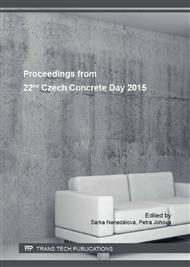p.209
p.215
p.221
p.227
p.235
p.241
p.246
p.253
p.261
Dynamic Characteristics of Multi-Story Reinforced Concrete Buildings
Abstract:
Having a realistic estimate of structural parameters, such as natural frequency and damping is important for design purposes. In this study, available wind and earthquake induced acceleration data from four multi-story reinforced concrete buildings are utilized to examine structural behaviour and system parameters. The buildings measurement systems are described and the recorded structural response data presented. The data stems from two different sources of excitation, i.e. wind and earthquake, and are recorded for various excitation levels and environmental conditions. System identification analyses of the buildings are carried out applying previously verified parametric methods to the recorded data. The natural frequencies and critical damping ratios established from the recordings are compared to values estimated using design guidelines and international data compilations for reinforced concrete structures of similar type. Considerable variability is discovered between the different estimation formulas and the observed natural frequencies of the buildings are found to lie at the upper limit of the prediction formula.
Info:
Periodical:
Pages:
235-240
Citation:
Online since:
April 2016
Authors:
Price:
Сopyright:
© 2016 Trans Tech Publications Ltd. All Rights Reserved
Share:
Citation:


